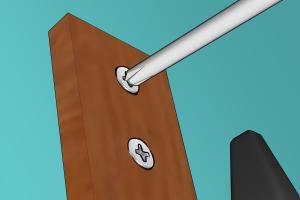Mastering Rawlplugs: The Ultimate Guide to Proper Use and Techniques

-
Quick Links:
- Introduction
- What is a Rawlplug?
- Types of Rawlplugs
- When to Use Rawlplugs
- How to Install a Rawlplug
- Common Mistakes to Avoid
- Case Studies and Examples
- Expert Insights
- FAQs
Introduction
Rawlplugs are a fundamental tool in the world of construction and DIY projects. They are essential for securing fixtures to walls, ceilings, and other surfaces, providing stability and strength. Whether you're hanging a picture frame, mounting shelves, or installing heavy appliances, knowing how to use a Rawlplug correctly can make all the difference.
What is a Rawlplug?
A Rawlplug, also known as a wall anchor, is a device used to secure objects to masonry or drywall. It expands when a screw is inserted, gripping the wall material. This mechanism allows for a secure hold, making it suitable for various applications. Rawlplugs come in different sizes and materials, tailored for specific uses and wall types.
Types of Rawlplugs
Understanding the types of Rawlplugs available is crucial for successful installation. Here are the most common types:
- Plastic Rawlplugs: Ideal for lightweight fixtures in drywall and soft materials.
- Metal Rawlplugs: Best for heavy-duty applications in brick or concrete.
- Toggle Bolts: Suitable for hollow walls where extra support is needed.
- Expansion Anchors: Used for securing items into concrete or masonry.
When to Use Rawlplugs
Knowing when to use Rawlplugs is essential for a successful project. Use Rawlplugs when:
- Mounting heavy items like shelves, TVs, or cabinets.
- Installing fixtures in hollow walls.
- Securing items to masonry or concrete.
- Creating a stable structure for outdoor installations.
How to Install a Rawlplug
Follow these detailed steps to install a Rawlplug properly:
Step 1: Gather Your Tools
- Drill
- Drill bits (appropriate size for the Rawlplug)
- Screwdriver
- Rawlplugs
- Screws
- Level (optional)
Step 2: Mark the Location
Use a pencil to mark where you intend to drill. Ensure it’s level, especially for shelves or heavy items.
Step 3: Drill the Hole
Using the appropriate drill bit, drill a hole into the marked spot. The hole should be slightly deeper than the length of the Rawlplug.
Step 4: Insert the Rawlplug
Push the Rawlplug into the hole until it is flush with the wall. You may need to tap it gently with a hammer.
Step 5: Insert the Screw
Align the fixture with the Rawlplug and insert the screw. Tighten until secure, but avoid overtightening, which can damage the wall or the plug.
Common Mistakes to Avoid
- Using the wrong size: Ensure the Rawlplug fits the screw and is suitable for the wall type.
- Drilling too shallow: A hole that is too shallow can lead to insufficient support.
- Overtightening screws: This can strip the Rawlplug or damage the wall.
Case Studies and Examples
Let’s explore a couple of real-world examples of Rawlplug usage:
Example 1: Mounting a Heavy Shelf
In a recent home improvement project, a homeowner successfully mounted a heavy shelf using metal Rawlplugs in a concrete wall. By following the proper installation steps, they secured the shelf to hold various items without any risk of falling.
Example 2: Hanging a TV
Another homeowner faced challenges while hanging a TV on drywall. They initially used plastic Rawlplugs, resulting in instability. Switching to toggle bolts provided the necessary support, demonstrating the importance of selecting the right type of Rawlplug.
Expert Insights
Experts recommend always testing the wall's integrity before installation. Use a stud finder to locate studs in drywall or assess the condition of masonry before drilling. Consulting with a professional can also save time and ensure safety in heavy installations.
FAQs
- What size Rawlplug should I use? It depends on the weight of the item you are hanging and the wall material.
- Can I reuse Rawlplugs? Generally, it’s not recommended as they lose their gripping ability after removal.
- How deep should I drill for a Rawlplug? The hole should be at least as deep as the length of the Rawlplug.
- Are there special Rawlplugs for outdoor use? Yes, choose weather-resistant materials for outdoor projects.
- Can Rawlplugs hold heavy items? Yes, but make sure to select the appropriate type for the weight and wall type.
- What is the difference between a Rawlplug and a wall anchor? They serve the same purpose but can differ in design and application.
- Do Rawlplugs work with all wall types? Not all; choose the right type based on the wall material.
- How can I tell if a Rawlplug is installed correctly? It should be flush with the wall and hold the screw firmly without wobbling.
- Is it necessary to use a drill for installation? While it’s highly recommended, some lighter Rawlplugs can be installed with a hand tool.
- What tools do I need for Rawlplug installation? A drill, drill bits, screws, and a screwdriver are essential.
Random Reads
- Mastering computer diagnostics
- Mastering computer networking
- Mastering oil over water polyurethane
- Mastering standard deviation excel
- How to set up and manage iphone voicemail
- How to make a hackintosh in virtualbox
- How to make an amazon account
- How to make an electric fence
- Transfer files pc pc
- Transfer photos ipod pc